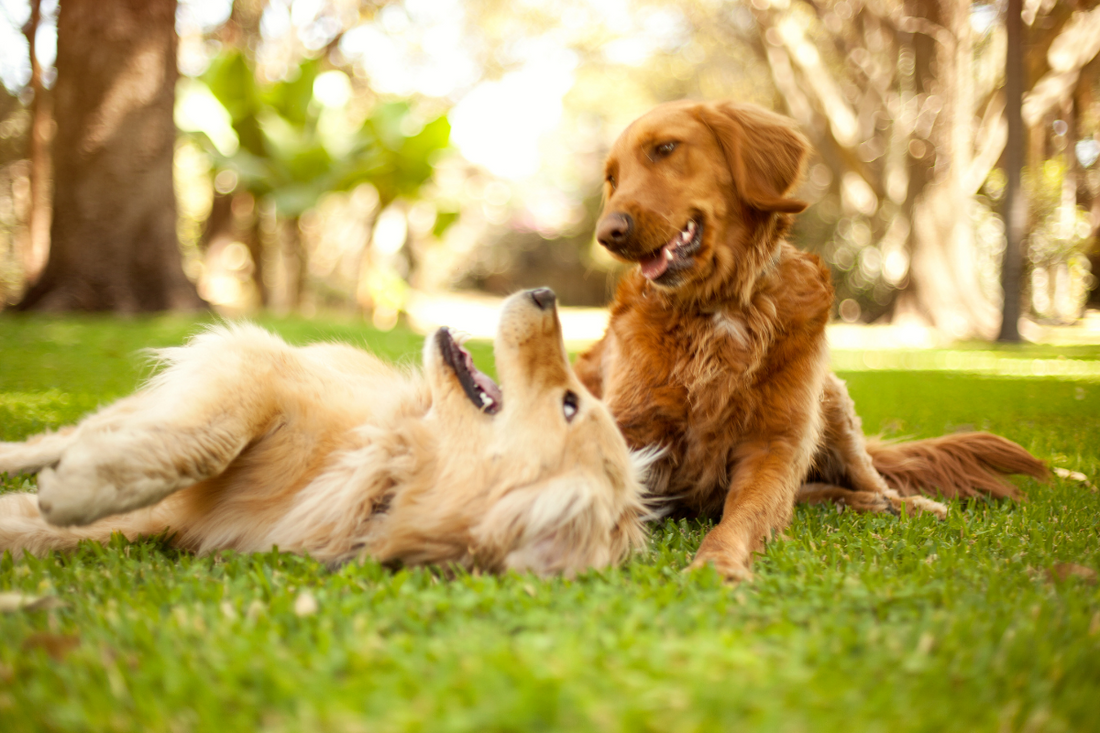What To Expect When Your Dog Is In Heat?

Is your female baby dog humping lately? She might be in heat.
From around six months old and for the rest of her life, a female dog will go into heat, or estrus, about every six months. This is when she’s ready to mate.
Hormonal changes cause noticeable differences in your dog, such as a swollen vulva, bleeding, more frequent urination, and increased nervousness or alertness. She might also raise her rump and hold her tail to the side to present herself to male dogs.
When Does Heat Start?

Dogs can go into heat as young as four months old in smaller breeds, but the average is about six months. Some giant breeds might not have their first heat until they’re 18-24 months old.
It’s strongly advised not to breed young female dogs during their first and second cycles because their eggs are not yet mature and the dog hasn’t reached full maturity. If you’re planning to breed your dog, your vet can help determine when she’s mature enough.
How Long Is Each Cycle?
A typical heat cycle lasts between 2-4 weeks. Early in the cycle, a female dog might not be receptive to male dogs, although some are receptive throughout the entire cycle. The cycle can be shorter or longer, and you’ll know it’s over when her vulva returns to its normal size and there’s no more bleeding or discharge.
There’s a small window when your dog is most fertile during the heat cycle, which may start around nine or ten days after she goes into heat and lasts about five days. However, she can become pregnant until the end of the cycle.
Is This a Lifetime Thing?
Once estrus begins, it may take a while for the cycle to become regular. Some dogs can take up to eighteen months for their cycle to become regular. It’s a good idea to keep a record during these early days. Once it does, the average is about every six months. Smaller breeds may go into heat more frequently, as often as 3-4 times a year.
Larger dogs, like Irish Wolfhounds, St. Bernards, and Great Danes, may only go into heat every 12-18 months. Unlike humans, female dogs experience estrus throughout their lives, although the time between cycles will get longer.
Should You Spay Your Dog?

Most pet owners choose to spay their female dogs before the first heat, except for breeders of purebreds. Some experts believe that spaying reduces the risk of mammary cancer and other conditions. It also eliminates the possibility of unwanted litters.
Understanding Your Dog's Heat Cycle
Knowing when your dog goes into heat can help you take better care of her. Here’s a breakdown of what to expect:
Signs Your Dog Is in Heat
- Swollen Vulva: One of the first signs that your dog is in heat is a swollen vulva. This can be quite noticeable and is a clear indication that her cycle has started.
- Bleeding: Spotting or bleeding is common during the heat cycle. You might notice bloodstains around the house or on her bedding.
- Frequent Urination: Your dog may urinate more frequently as a way to signal to male dogs that she’s in heat.
- Behavioral Changes: She might become more anxious or alert. Some dogs become clingier, while others might be more agitated.
- Receptive Posture: She’ll present herself to male dogs by raising her rump and holding her tail off to the side.
Managing Your Dog's Heat
Handling a dog in heat can be challenging, but here are some tips to help:
- Keep Her Indoors: During her heat cycle, it’s best to keep your dog indoors to avoid any unwanted mating. If you need to take her outside, always use a leash and keep a close eye on her.
- Use Doggie Diapers: To manage the bleeding, consider using doggie diapers. They can keep your house clean and make your dog more comfortable.
- Provide Extra Comfort: Your dog might be more anxious or needy during her heat cycle. Give her extra attention and comfort to help her through this time.
Long-Term Care

Keeping track of your dog’s heat cycles can help you understand her needs better. Here are some long-term care tips:
- Record Keeping: Keep a journal of when your dog goes into heat, noting any behavioral changes and how long the cycle lasts. This can help you predict future cycles and prepare accordingly.
- Regular Vet Visits: Regular check-ups with your vet can ensure your dog is healthy and that there are no complications with her heat cycles.
- Consider Spaying: If you’re not planning to breed your dog, spaying is a responsible choice. It can prevent health issues and avoid the stress of managing heat cycles.
Understanding and managing your dog’s heat cycle is crucial for her health and well-being. Whether you decide to breed her or spay her, being informed will help you make the best decisions for your furry friend.
Managing a dog in heat can be tricky, but taking her for regular walks is still important. The Joyride Harness is designed for comfort and control, making walks more enjoyable for both you and your dog. Its secure fit helps prevent any accidental escapes, especially when your dog might be more anxious or energetic during her cycle.
Ready to make walks smoother and safer? Check out the Joyride Harness today! Visit our website to find the perfect harness for your pup and enjoy stress-free walks all year round.





















